
The seas around the UK thrive with life. Among the many dazzling species found in our waters are a number that have been designated as protected, endangered, and threatened, because they are particularly sensitive to human impacts.
Common dolphin, grey seal, and seabirds such as fulmar and cormorant are all examples of these “sensitive marine species”. Unfortunately, they can be hard for fishermen to avoid and can end up being accidentally caught in fishing gear – an event known as “bycatch”.
Bycatch is both an animal welfare concern and a conservation concern. Globally, it’s one of the greatest threats to sensitive marine species, contributing to the decline of certain populations of these animals. This has a knock-on impact on ecosystems of which sensitive marine species are a vital part.
The consequences of bycatch don’t end there – it can be a distressing experience for fishermen who care about the seas in which they fish, as well as costly, time-consuming and, in certain circumstances, dangerous to handle.
This means that work is urgently needed to find ways to reduce sensitive marine species bycatch.
Clean Catch will help the UK Government meet its ambitions to minimise and – where possible – eliminate bycatch of sensitive marine species, as set out in the ecosystem objective of the Fisheries Act and elaborated in the UK Marine Wildlife Bycatch Mitigation Initiative (BMI).
Our key objectives are to:
Clean Catch’s governance structure includes several groups whose memberships are drawn from among the fishing industry, the wider seafood industry, scientists, environmental NGOs, regulators, policymakers, and technology providers. These groups work either at the national or local level to provide advice, recommendations, and guidance critical to the delivery of our programme objectives.
“Bycatch mitigation” is the process of reducing accidental wildlife capture. This can be done through many different methods, such as using special acoustic devices that deter certain species, or by fishing at a time of day when sensitive species are less active.
With many approaches to bycatch mitigation, each tailored to specific gear types and wildlife species, the world of bycatch mitigation can be difficult to navigate. To address this, Clean Catch has created the Bycatch Mitigation Hub (or just “the Hub”).
The Hub is an interactive portal for users to explore bycatch mitigation measures trialled around the world for marine mammals, seabirds, sharks, skates, and rays, searching by gear type, species, and mitigation type. Information is provided about measures both widely used and still in early stages of development, and the evidence for their effectiveness.
The information on the Hub draws on research from peer-reviewed studies, our own work with fishermen to trial mitigation measures, and sources such as international agreements and other bycatch initiatives.
We periodically review new research on bycatch mitigation to ensure that the Hub remains fully up to date. If you have information that could be used to update the Hub, or any other feedback, please contact us.
Please contact us if you want to tell us about new research on bycatch, contribute to our work, or have any other enquiries.
Explore the Bycatch Mitigation Hub to find possible measures to reduce bycatch